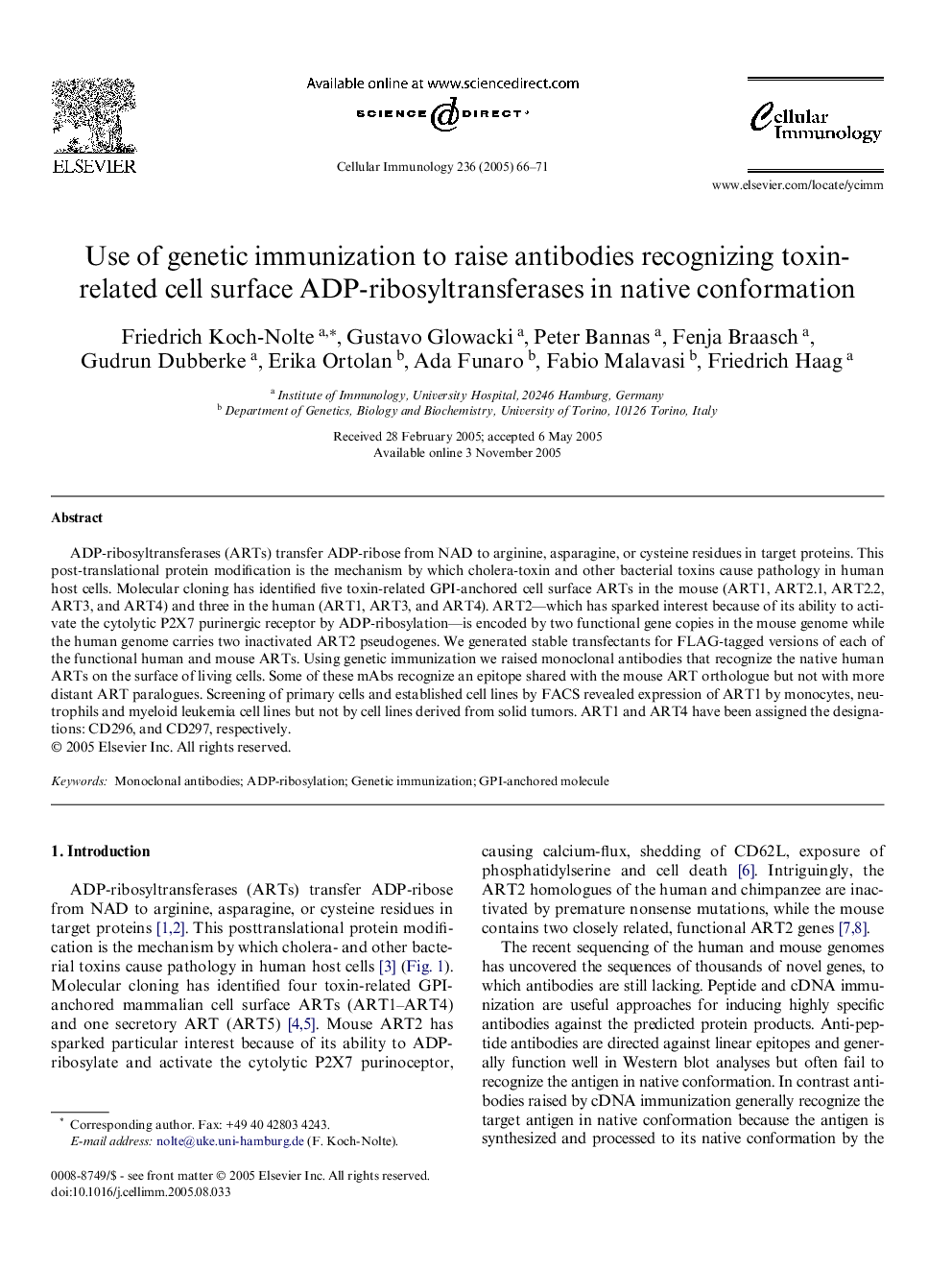| کد مقاله | کد نشریه | سال انتشار | مقاله انگلیسی | نسخه تمام متن |
|---|---|---|---|---|
| 9912053 | 1549424 | 2005 | 6 صفحه PDF | دانلود رایگان |
عنوان انگلیسی مقاله ISI
Use of genetic immunization to raise antibodies recognizing toxin-related cell surface ADP-ribosyltransferases in native conformation
دانلود مقاله + سفارش ترجمه
دانلود مقاله ISI انگلیسی
رایگان برای ایرانیان
کلمات کلیدی
موضوعات مرتبط
علوم زیستی و بیوفناوری
بیوشیمی، ژنتیک و زیست شناسی مولکولی
بیولوژی سلول
پیش نمایش صفحه اول مقاله

چکیده انگلیسی
ADP-ribosyltransferases (ARTs) transfer ADP-ribose from NAD to arginine, asparagine, or cysteine residues in target proteins. This post-translational protein modification is the mechanism by which cholera-toxin and other bacterial toxins cause pathology in human host cells. Molecular cloning has identified five toxin-related GPI-anchored cell surface ARTs in the mouse (ART1, ART2.1, ART2.2, ART3, and ART4) and three in the human (ART1, ART3, and ART4). ART2-which has sparked interest because of its ability to activate the cytolytic P2X7 purinergic receptor by ADP-ribosylation-is encoded by two functional gene copies in the mouse genome while the human genome carries two inactivated ART2 pseudogenes. We generated stable transfectants for FLAG-tagged versions of each of the functional human and mouse ARTs. Using genetic immunization we raised monoclonal antibodies that recognize the native human ARTs on the surface of living cells. Some of these mAbs recognize an epitope shared with the mouse ART orthologue but not with more distant ART paralogues. Screening of primary cells and established cell lines by FACS revealed expression of ART1 by monocytes, neutrophils and myeloid leukemia cell lines but not by cell lines derived from solid tumors. ART1 and ART4 have been assigned the designations: CD296, and CD297, respectively.
ناشر
Database: Elsevier - ScienceDirect (ساینس دایرکت)
Journal: Cellular Immunology - Volume 236, Issues 1â2, JulyâAugust 2005, Pages 66-71
Journal: Cellular Immunology - Volume 236, Issues 1â2, JulyâAugust 2005, Pages 66-71
نویسندگان
Friedrich Koch-Nolte, Gustavo Glowacki, Peter Bannas, Fenja Braasch, Gudrun Dubberke, Erika Ortolan, Ada Funaro, Fabio Malavasi, Friedrich Haag,